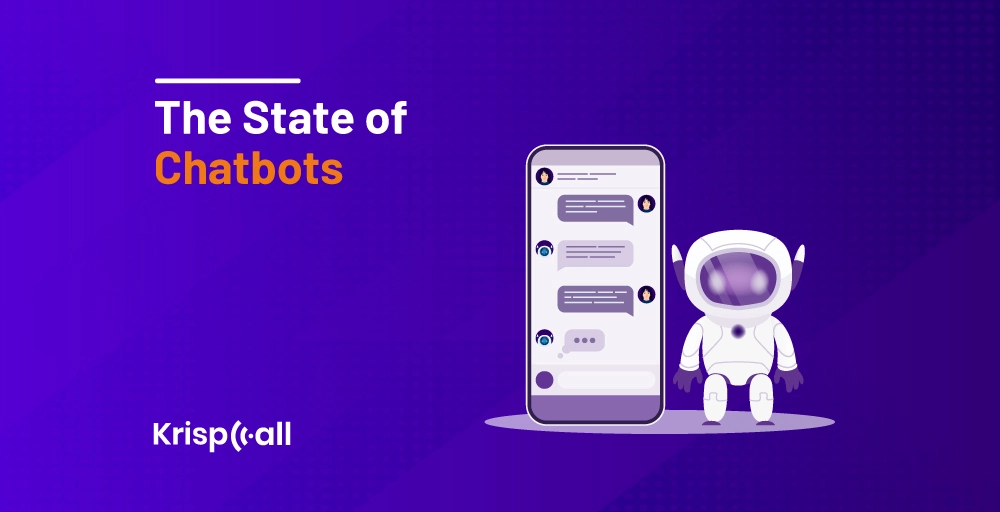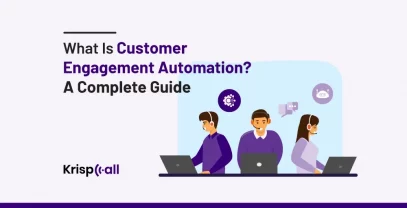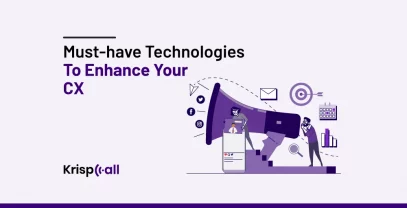Over the past few years, chatbots🤖 have rapidly transformed how companies communicate with customers. These AI-powered programs, also known as AI assistants, allow businesses to provide customer service virtually 24/7 through text conversations.
Moreover, chatbot usage has significantly reduced wait times⏲️ for assistance and made it more convenient for people to get their questions answered whenever needed.
With chatbots’ growing role in business, it is interesting to explore expert predictions and chatbot statistics for how these conversational agents may continue to evolve and impact industries in 2024.
This blog post will explore technological advancements in chatbot technology, its application in different industries, its challenges, and how its increasing capabilities could shape the future.
🔑 KEY HIGHLIGHTS
- Chatbots have rapidly transformed business communications by providing 24/7 virtual customer service through text conversations.
- Advances in AI, machine learning, and NLP have given chatbot abilities beyond simple responses, like understanding the language better and communicating more naturally.
- Conversational AI models are advanced chatbots designed for natural human-like discussions on various topics.
- Chatbots automate tasks and customer support across industries, such as real estate, healthcare, banking, HR, and hospitality.
- Future trends indicate chatbots will integrate voice, improve human interactions, connect on social media, and boost sales through marketing and customer support.
- As chatbot technology progresses, businesses can maximize their benefits through effective customer engagement strategies, functions, channels, and designs that are implemented in accordance with market trends.
Technological Advancements
Chatbot technology has advanced rapidly in recent years. As artificial intelligence and machine learning techniques improved, AI chatbots gained abilities beyond simple programmed responses.
Chatbots can now better understand human speech and communicate more like a natural conversation. Advanced NLP, computer vision, and other technical areas allow chatbots to interpret our messages and respond appropriately in various contexts. By automating routine queries and tasks, chatbots are creating new opportunities across many industries.
1. Natural Language Processing (NLP)
Natural Language Processing, or NLP, allows chatbots to better understand human language. It helps bots recognize the meaning of words, phrases, and sentences. It lets chatbots break down messages and interpret the intent behind what someone says.
NLP allows chatbots to have more natural, human-like conversations instead of just preset questions and answers. This technology helps bots understand context so they can respond to users thoughtfully, making conversations more enjoyable and helpful for people.
2. Artificial Intelligence and Machine Learning
Artificial intelligence and machine learning help chatbots become smarter over time. AI gives chatbots the ability to think and learn like humans, and machine learning allows chatbots to study large amounts of data, like transcripts of past conversations.
From this information, chatbots can learn patterns and improve their own knowledge. The more data a chatbot has, the more human-like and useful its responses become.
Machine learning enables chatbots to learn from every new conversation they have. This makes chatbots more helpful in understanding customers and responding to people’s needs. In the future, AI and machine learning will continue advancing chatbots to assist users even better.
3. Conversational AI Models
Conversational AI models are advanced types of AI chatbots that are designed to have natural human-like conversations. Instead of just answering direct questions, conversational AI can discuss various topics and keep a dialogue flowing in many directions.
Some examples of conversational AI models are BERT, GPT-3, and ChatGPT. They were trained on massive datasets, giving them a more comprehensive range of knowledge and abilities than traditional chatbots.
Conversational AI can discuss different subjects, tell stories, offer opinions, and more – coming closer than ever to replicating real human conversations. This technology helps chatbots interact with users intuitively, like talking with someone.
Applications of Chatbots Across Industries
Commonly referred to as conversational AI, chatbots are utilized across many sectors. Here are 5 industries at the forefront of capitalizing on chatbot technology’s possibilities:
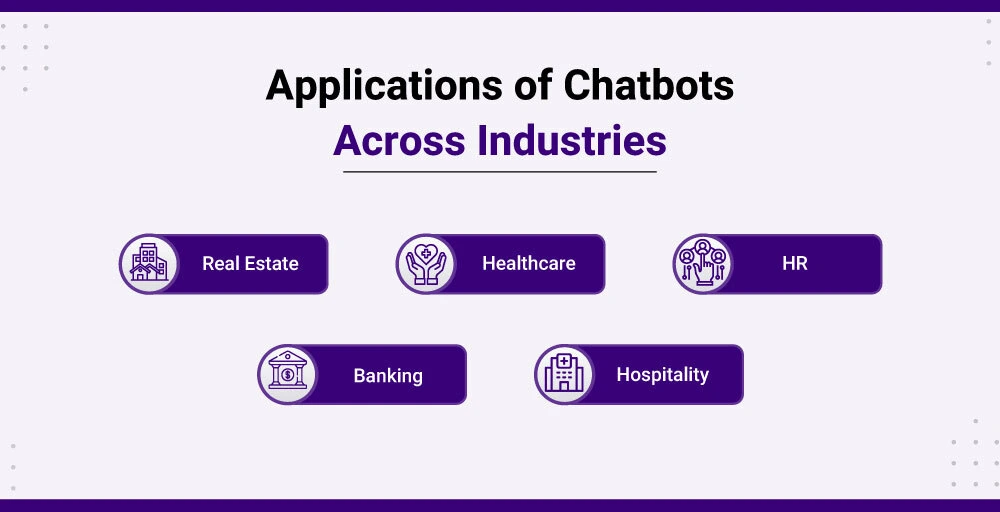
1. Real Estate
Real estate is one of the fastest-growing industries worldwide. Statistics show that the Real Estate market worldwide is expected to reach a staggering value of $637.80 trillion by 2024. However, success in real estate is challenging. Every completed home sale is crucial. On average, losing customers costs real estate agents more than those in e-commerce.
Nevertheless, chatbots can help keep visitors on websites. They can help filter properties based on people’s wants, provide neighborhood info, and schedule appointments. But chatbots do more for real estate sites.
Agents can also use chatbots to learn about client needs before meeting in person, which increases their chances of success. By gathering this information ahead of time, chatbots can enhance an agent’s ability to close deals.
2. Healthcare
Healthcare is one of the busiest industries worldwide. Being a doctor is challenging due to the high focus and attention to detail demands. This stress level affects doctors, nurses, and other medical staff.
Research shows that admin work takes up about one-sixth of a doctor’s time on average. Chatbots can save thousands of working hours each year for hospitals and doctors by taking over tasks normally done by people. This eases doctors’ workloads while improving patients’ experiences.
Beyond medical practices, patients benefit, too. Chatbots send medication reminders to help people follow prescribed care. They also help monitor overall health so patients can stay informed and proactive about well-being.
3. HR
HR or human resources is one of the most important parts of a company’s success. Many think HR only deals with hiring. However, HR handles auditing, legal compliance, policy creation, and other vital duties.
Every owner wants their HR team to be as future-focused and proactive as possible. However, traditional HR teams often spend most of their time answering questions and managing internal talent issues. AI-powered chatbots offer a solution by handling routine HR work, freeing HR to focus on complex or critical tasks.
As a company attracts more candidates, the workload can overwhelm HR. Chatbots offer a solution by handling routine HR work. This frees HR to focus on complex or critical tasks. Chatbots answer common questions about jobs, training, time off, etc.
4. Banking
Advances in technology have created new ways for customers to handle finances anytime from home with clicks. People can now easily transfer funds, share info, verify transactions, and do many financial tasks remotely.
Chatbots are available around the clock with 99% uptime. This allows banks to assist customers anywhere, anytime, by providing continuous support.
Thanks to chatbots, banking is now as easy as sending a text. They instantly answer questions of all types, from basic to complex tasks. Whether on websites, mobile apps, or messaging platforms like Facebook Messenger, chatbots smoothly help customers wherever they are.
5. Hospitality
The projected growth of the global hospitality market is set to soar to a staggering $5,816.66 billion by 2027. With this, booking hotels and answering customer queries can require a lot of staff.
Chatbots can handle frequently asked questions and give customers and businesses useful insights. This lets chatbots do many jobs independently. For example, chatbots can schedule meetings, book cabs, and place orders from voice or text commands.
Furthermore, chatbots allow customers to book or reserve hotel rooms through payment systems. They can also act as virtual concierges, offering helpful information about local bars and restaurants. Chatbots provide a built-in review system as well, boosting a company’s social media presence.
Challenges and Limitations
Chatbots have changed the way businesses these days interact with their customers, yet they too have their limitations, such as:
1. Chatbots Are Not Human
The plain truth is that chatbots are machines, not human beings. Some companies aim to make chatbots seem more human by having longer conversations beyond just info and transactions. Others may use names or photos like a real person.
If bots try to fool people into thinking they’re human with names/pictures, clients will get upset fast and go elsewhere. They may associate those bad feelings with the brand in the long term.
2. Chatbots Don’t Have Emotions
Chatbots are great for giving facts but can never truly form an emotional bond with customers. Creating an emotional connection is necessary for success today.
Research in the Harvard Business Review showed customers with a brand emotional tie are 25-100% more valuable than satisfied ones.
A Gartner study also found over half of respondents felt uncomfortable when bots express emotions. A human appearance or face also caused discomfort. Most preferred chatbots that look non-human and provide typed responses instead of emotional displays.
3. Chatbots Are Often Repetitive
One challenge for chatbots is they can only give a number of replies. It’s impossible to program them to understand how people speak, so they can’t indeed have real conversations.
When this happens, people feel their questions aren’t heard. They start associating those bad feelings with the brand. This damages trust in the relationship.
4. Chatbots Can’t Help People Make Decisions
When shopping online, especially for expensive items, people consider many factors before choosing. Even with details, 360 views, and reviews, people may still feel unsure about purchases.
As they shop in stores, guidance from experts eases uncertainties. But chatbots can’t replicate this type of decision support. They don’t have the capabilities needed to thoroughly evaluate choices with customers and reassure them in the personalized way people seek out when spending money.
5. Chatbots Don’t Help Keep Customers
Competition is fierce, and so is the focus on keeping customers. Giving personal experiences is key. If brands don’t see people as individuals, customers are more likely to leave.
Leaning too much on chatbots can create feelings that drive customers away. Instead of showing real emotion and empathy, bots just repeat formulas. Sure, bots speed up tasks. However, interacting with one may make people feel like the company sees them only as data, not individuals.
The Future of Chatbots
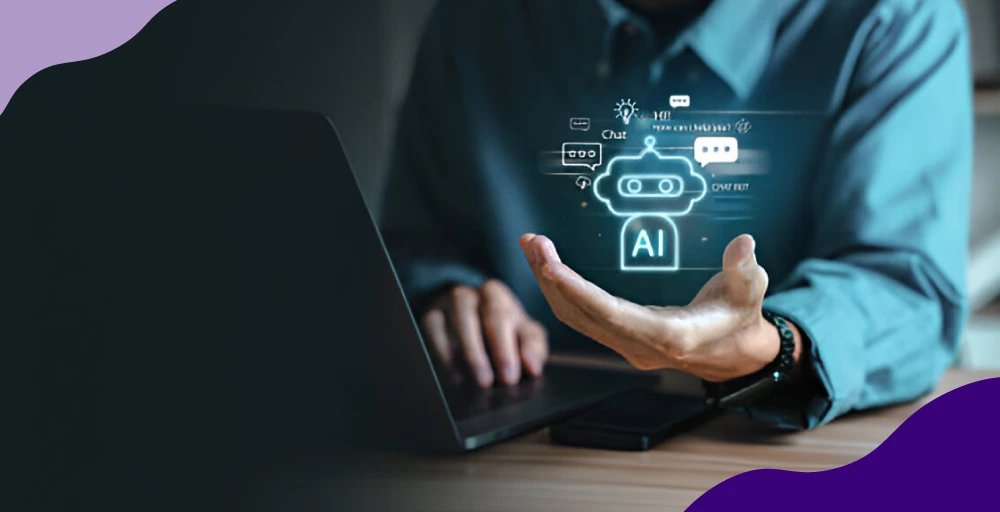
A company called Verloop did research that showed businesses around the world expect to save up to $8 billion by using digital assistants. This demonstrates how important these assistants are for businesses. As a result, analysts predict the chatbot industry will be worth $102.26 billion.
Major players in the industry, such as Oracle, agree with these predictions. They reported that 80% of companies plan to add chatbots to how they help customers.
As technology evolves, chatbots can provide innovative solutions for businesses. Here are some chatbot trends expected in the near future:
- Voice abilities – Chatbots will integrate voice assistants for a better customer experience. Around 24% of enterprises, 15% of mid-sized companies, and 16% of small companies already use voice in chatbots.
- More human interactions – Machine learning and NLP (Natural Language Processing) will help chatbots understand conversations better and respond more like a person for a natural feel. They can answer questions accurately while letting companies focus on other work.
- Social media use – Chatbots will help businesses connect with customers and strengthen their brand on sites like Facebook and Twitter. Around 47% of shoppers are willing to buy from chatbots during these interactions.
- Marketing chatbots – By 2024, analysts predict chatbots will facilitate $142 billion of retail spent. Companies can reach customers efficiently this way. Satisfied customers lead to more sales and profits. Stores using conversational commerce correctly are increasing annual revenue by 7 to 25%.
In short, chatbots will continue to advance to make interactions feel more human and serve businesses in new ways, such as voice control and social networks.
Conclusion
Chatbots have been extremely useful for businesses in automating repetitive tasks and focusing more on attracting new potential customers through enhanced customer experience. Chatbots have changed how businesses approach customer support, from data collection and insights to lead generation and qualification.
As the AI assistant technology continues to progress rapidly, it will be crucial for companies to carefully research chatbot capabilities, assess their specific needs, and select the most effective solutions.
Integrating chatbots requires determining the best customer engagement strategies, functions, channels, and design. With a well-planned chatbot implementation guided by the latest market trends and statistics, businesses can maximize the benefits of these intelligent agents in 2024 and beyond.
FAQ
What are the statistics for chatbots in 2024?
Some of the statistics for chatbots in 2024 are:
- The global chatbot market is expected to reach $994 million by 2024.
- Estimates for 2024 indicate that worldwide retail spending by consumers using digital assistants could potentially total $142 billion globally.
- Research shows that almost 40% of all internet users across the planet currently have a preference for communicating with chatbots rather than other computer-based helpers.
- ChatGPT ranks as the most used AI chatbot in the US, with a 19% share of Americans who have used it in the past 3 months, followed by Bing (6%) and Bard (4%).
What is the future of the chatbot market?
The future of the chatbot market is bound for a remarkable annual growth of approximately 23.3%. If this expansion rate is sustained, the overall size of the chatbot industry is projected to reach $15.5 billion by the year 2028. This signifies tremendous predicted increases in the scope and financial value of the chatbot sector over the next several years.
What are the future predictions of chatbots?
The future predictions of chatbots are that:
- AI will power 95% of customer interactions by 2025.
- Gartner predicts chatbots will become a primary customer service channel by 2027.
- The global Chatbot Market size is projected to grow to USD 1,953.3 million by 2027.
What does the future hold for chatbots?
The future is very promising for chatbots as AI advances to give them more powerful abilities to assist users through natural conversations on any subject!

